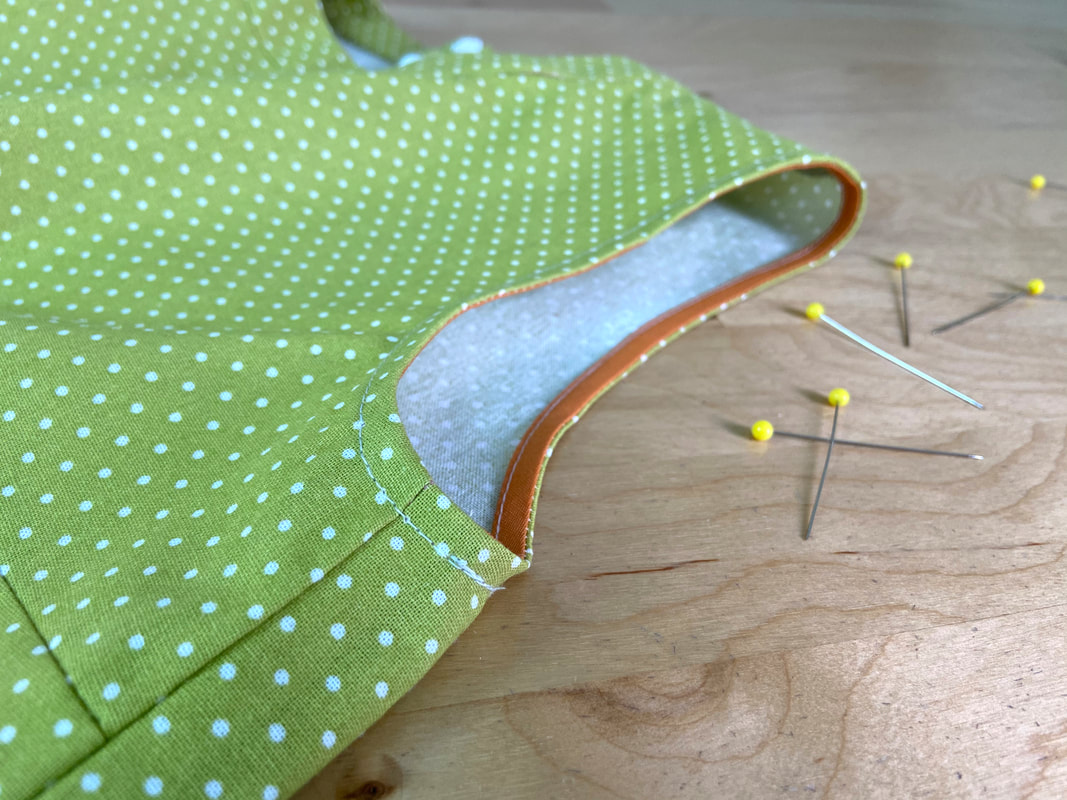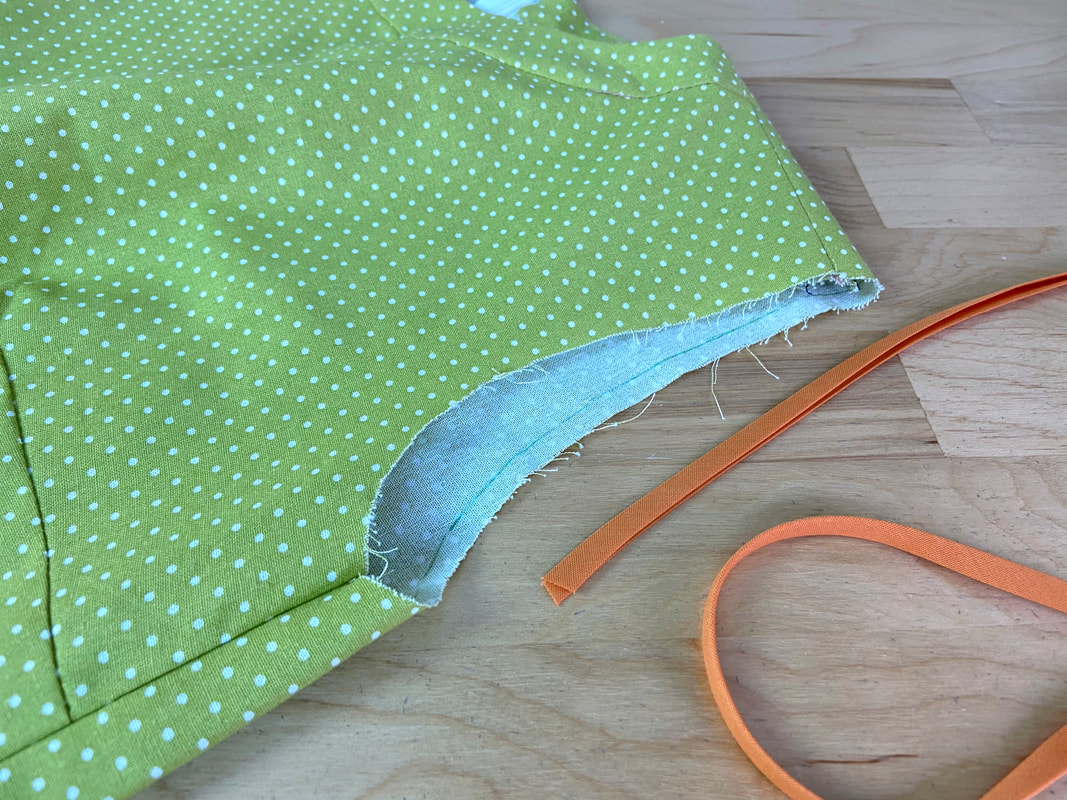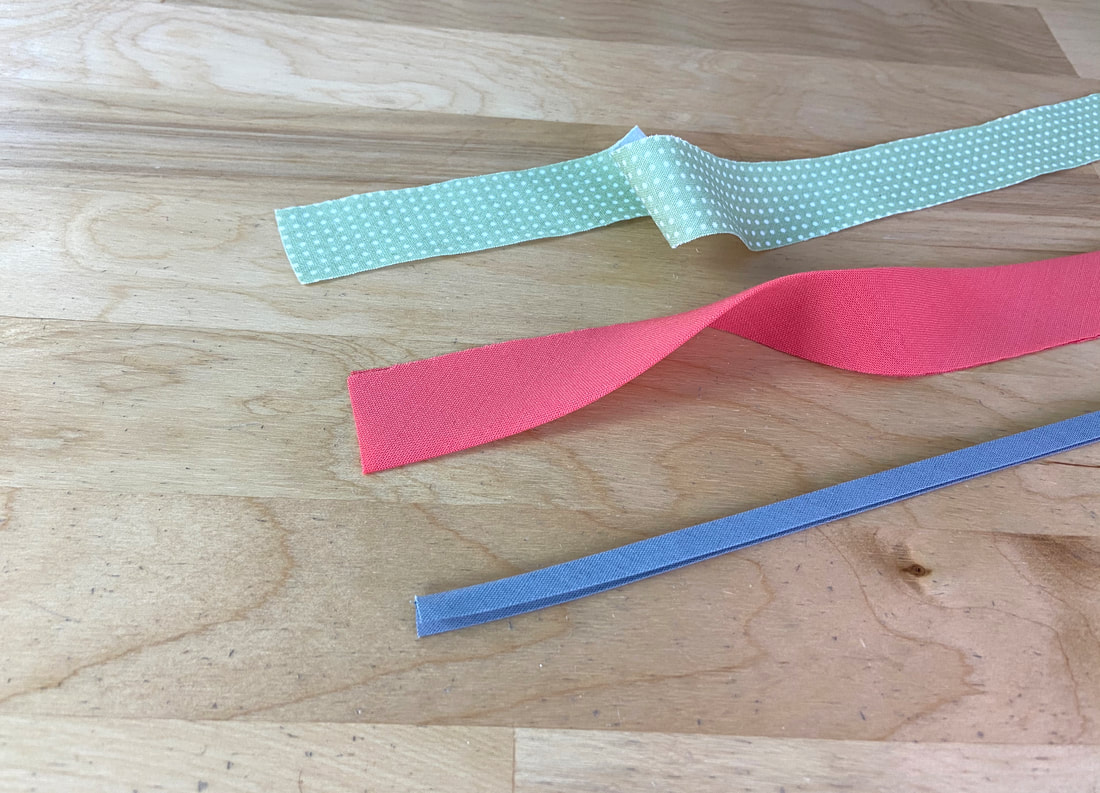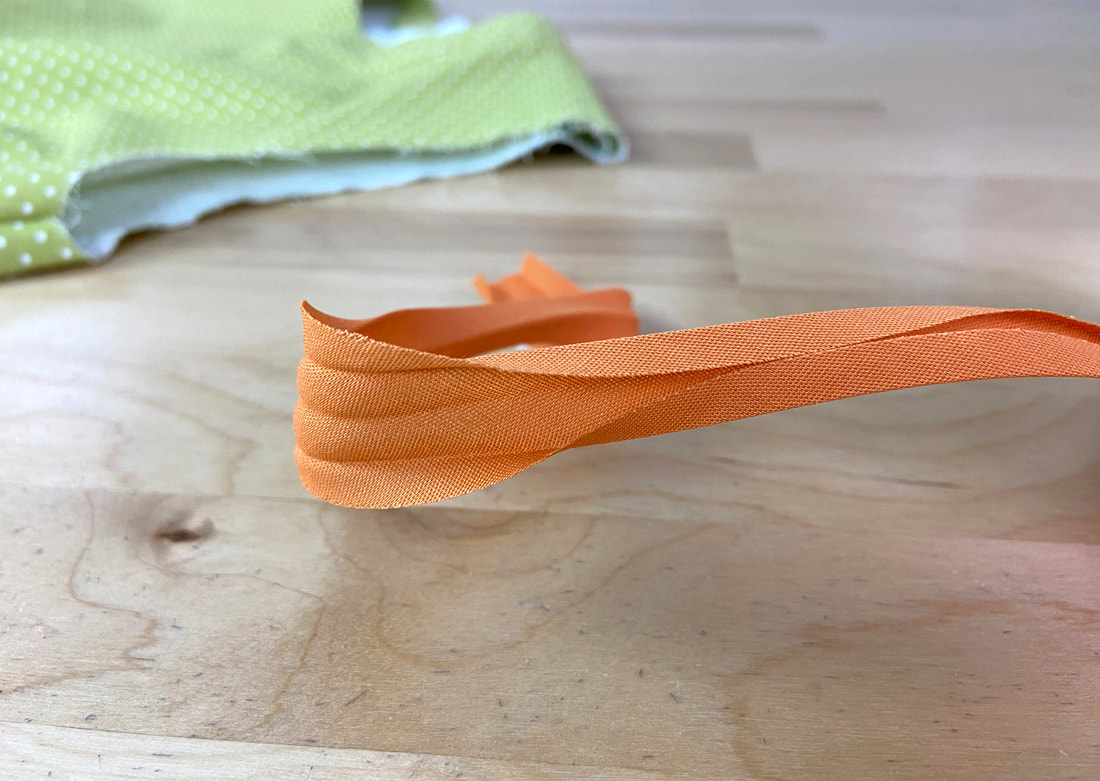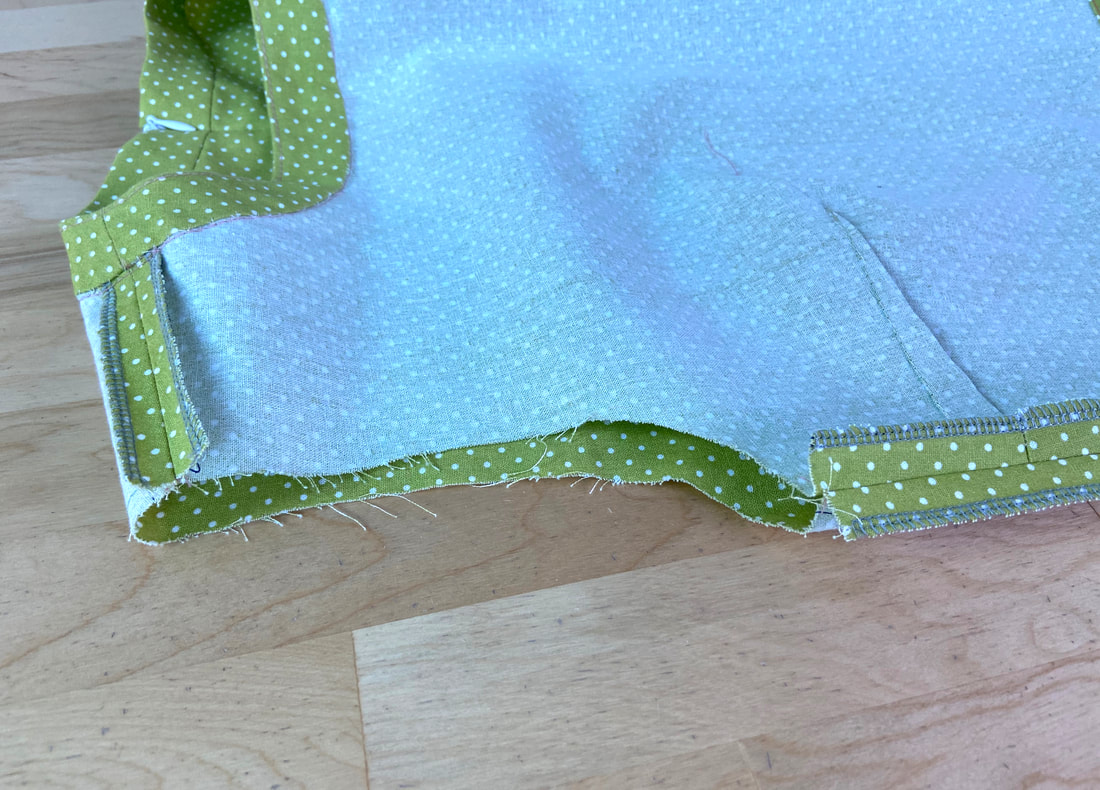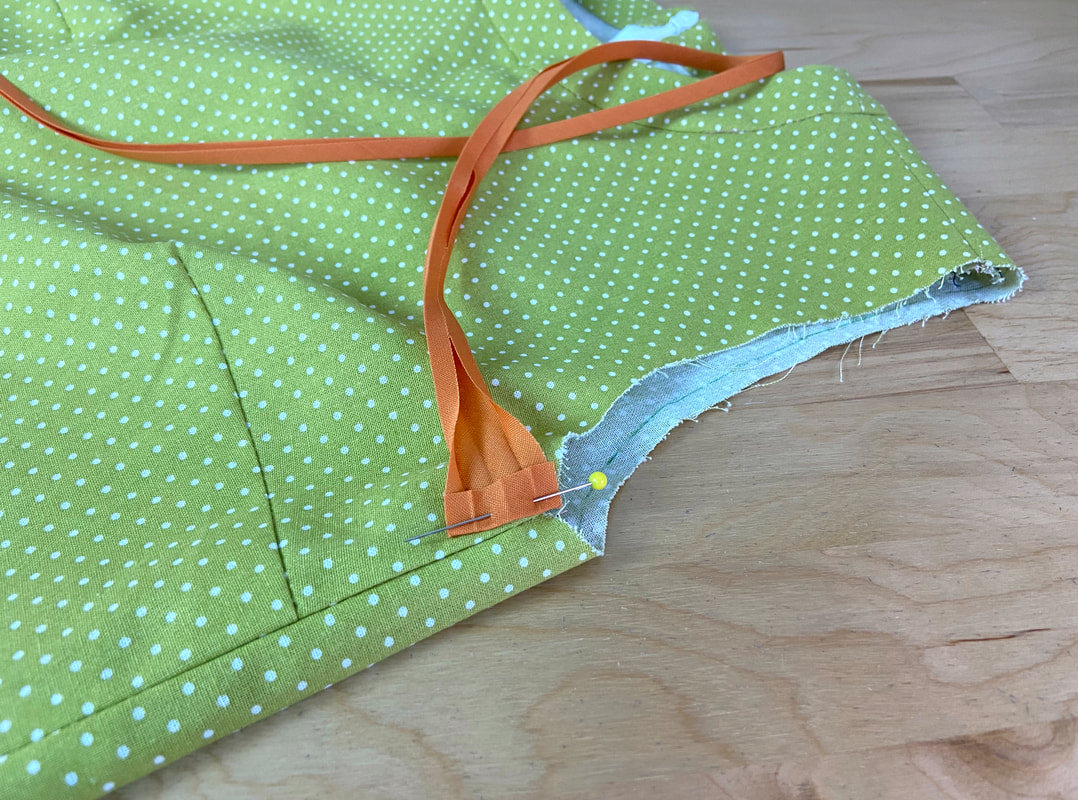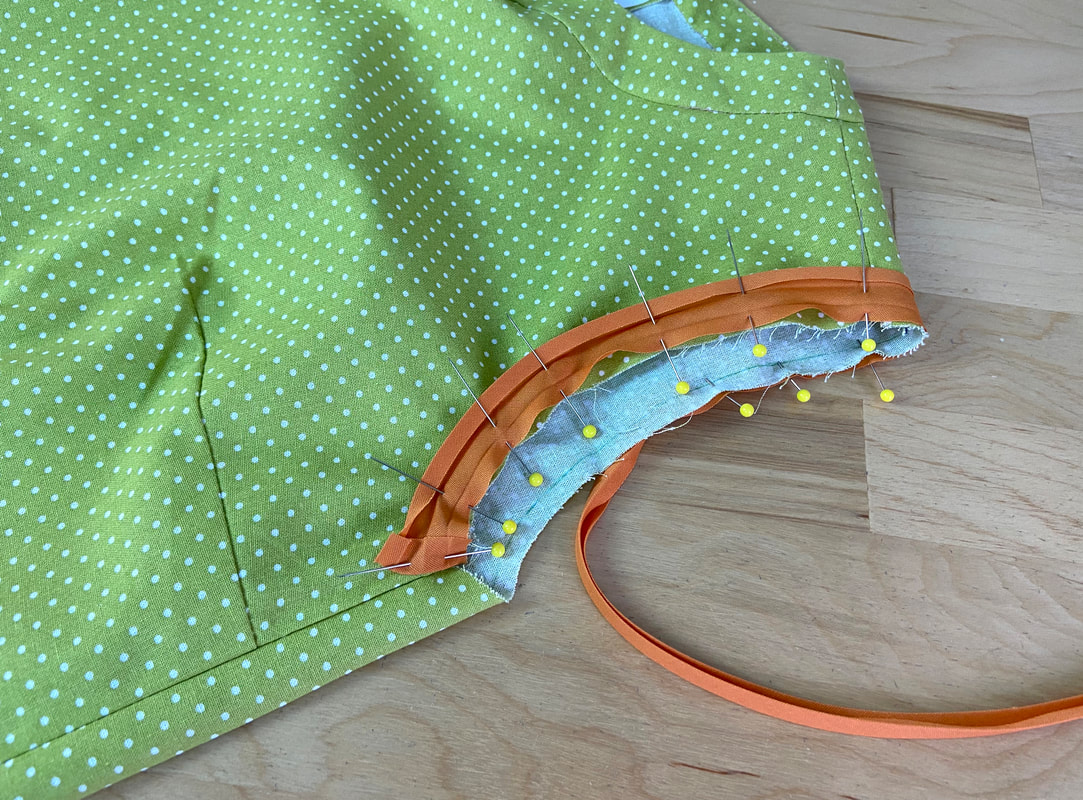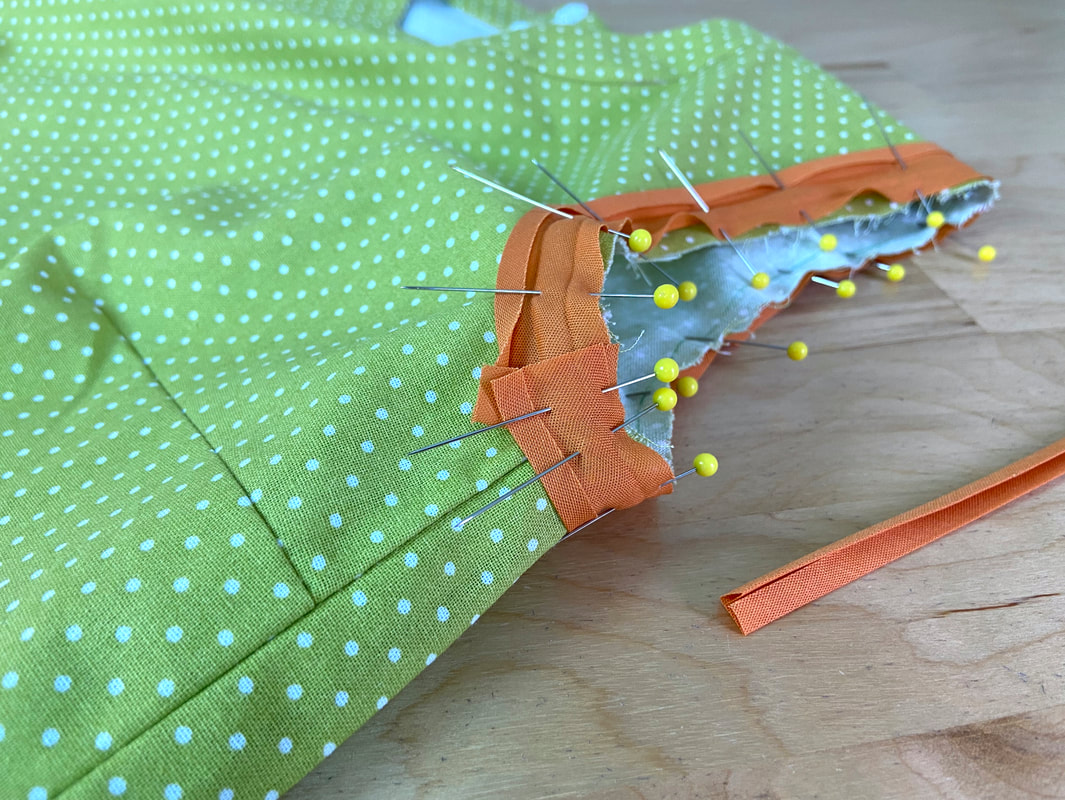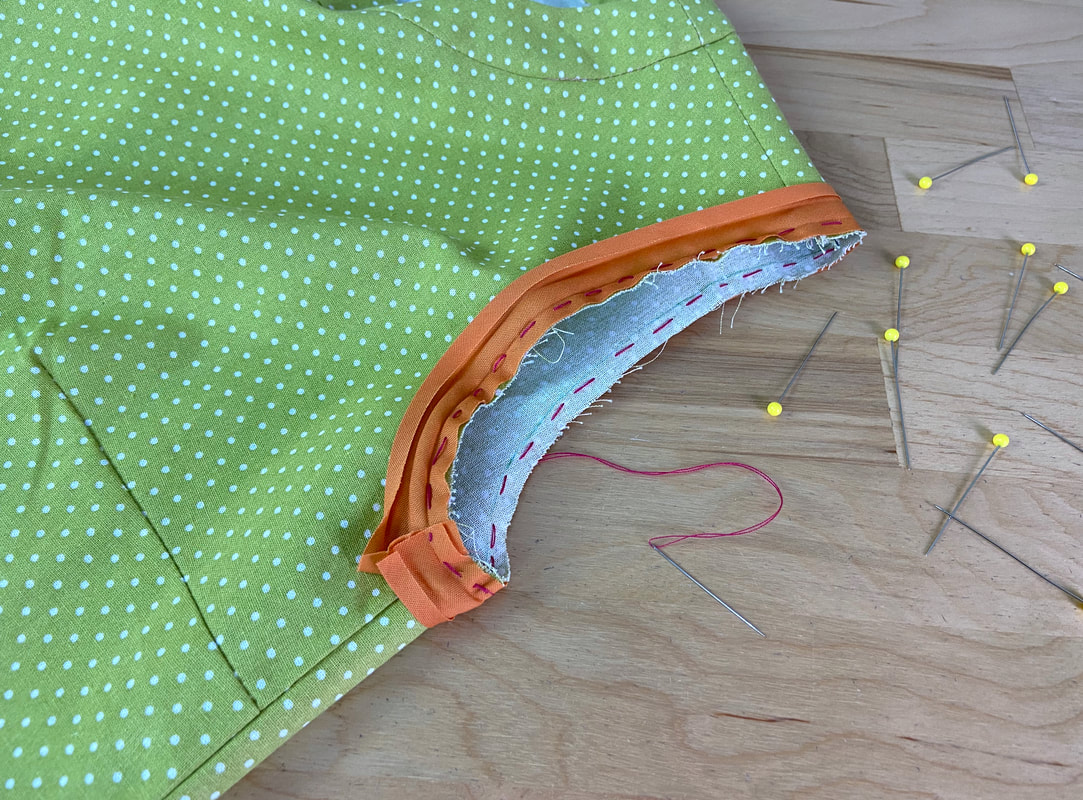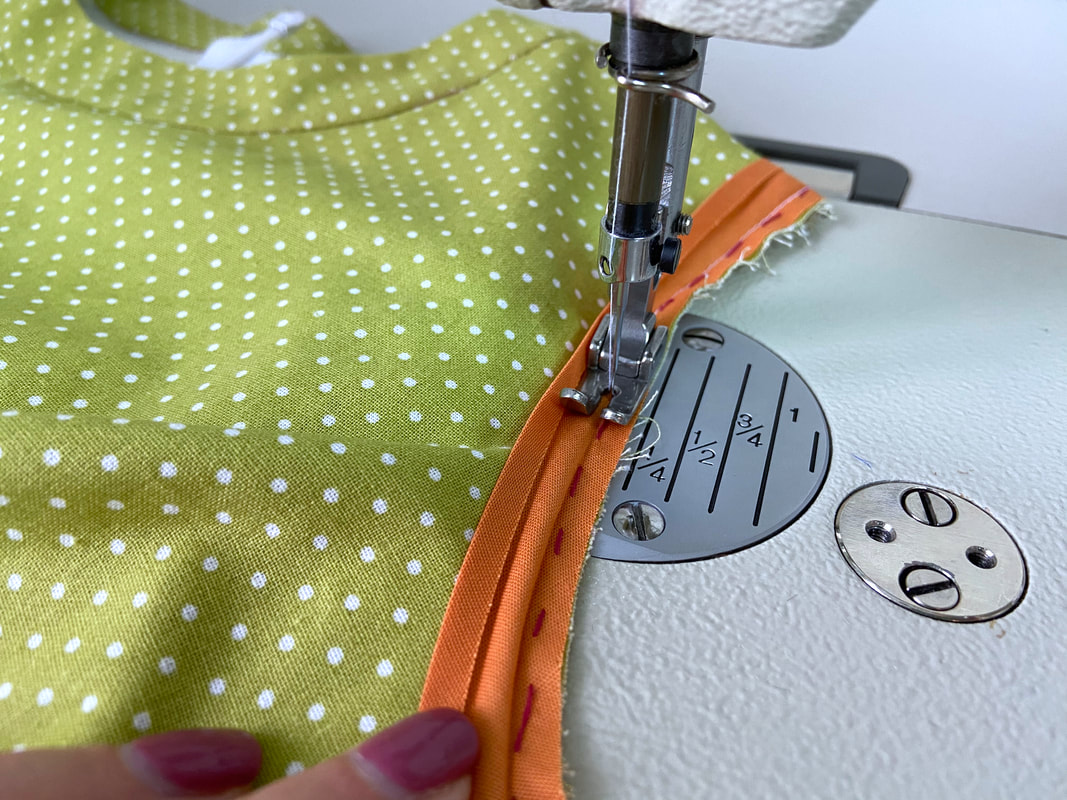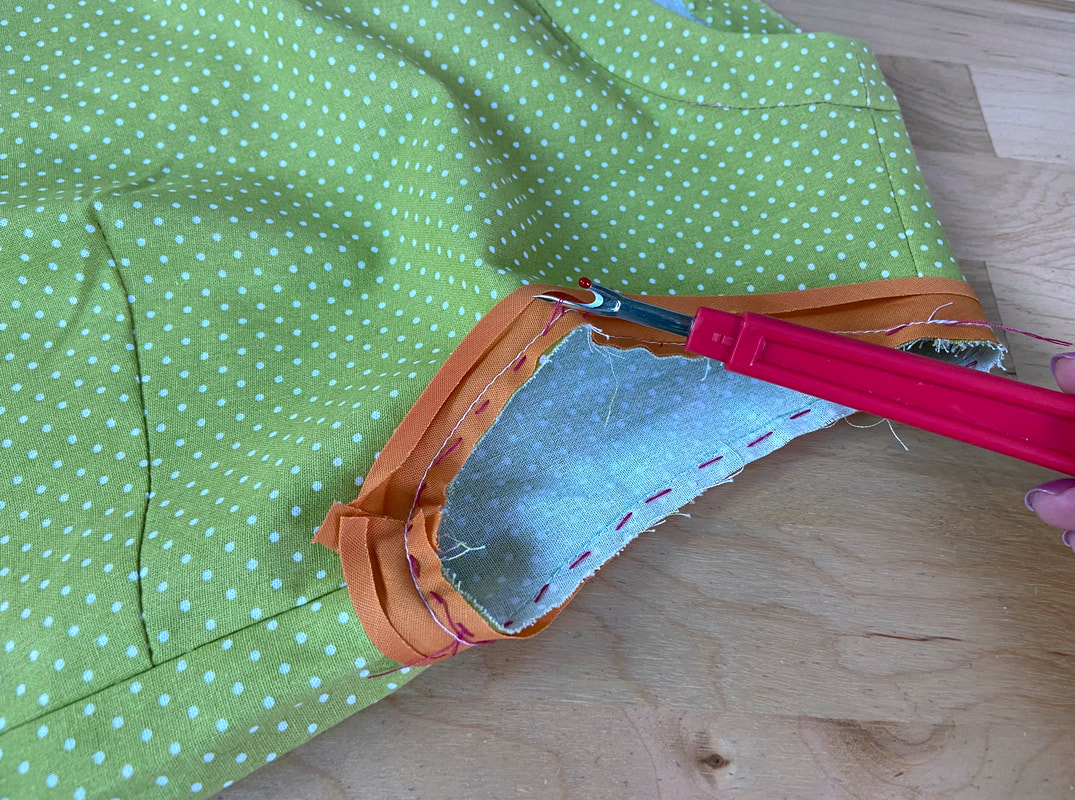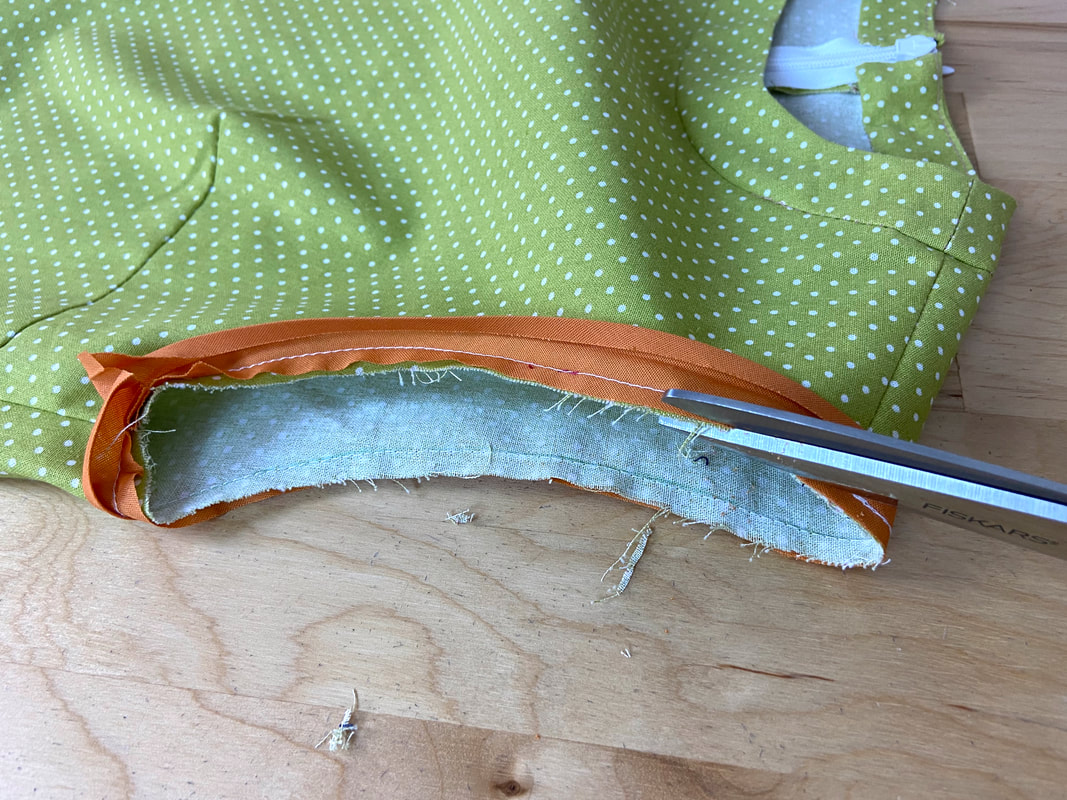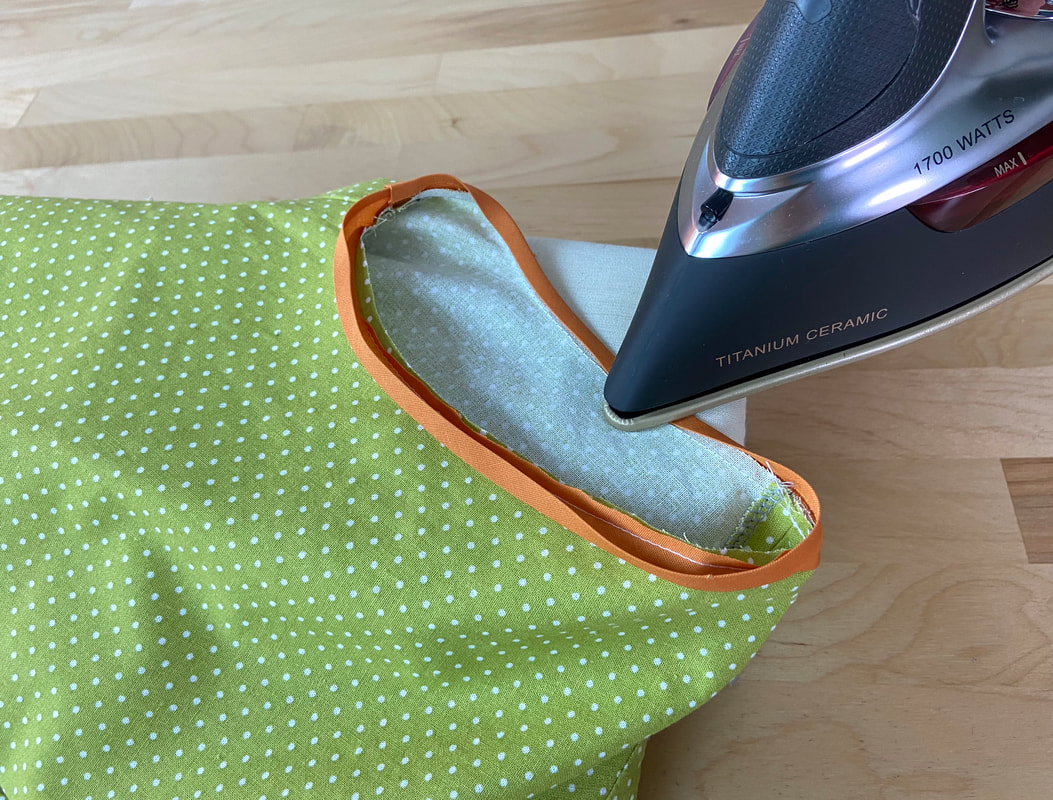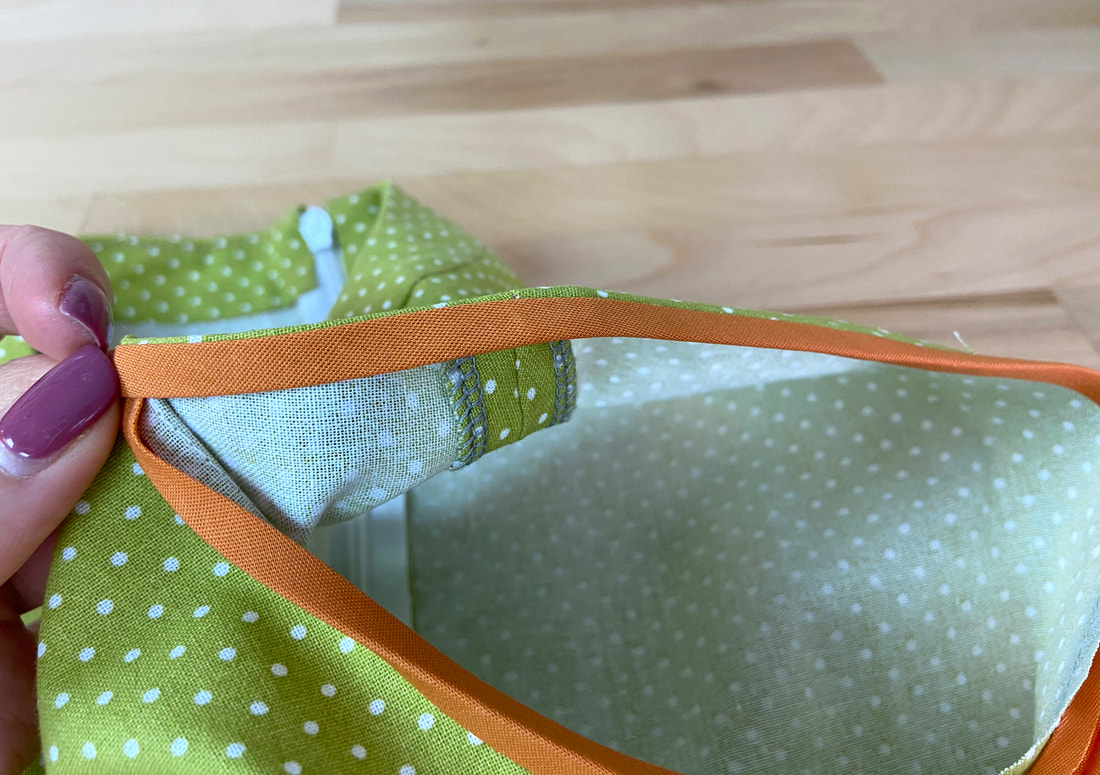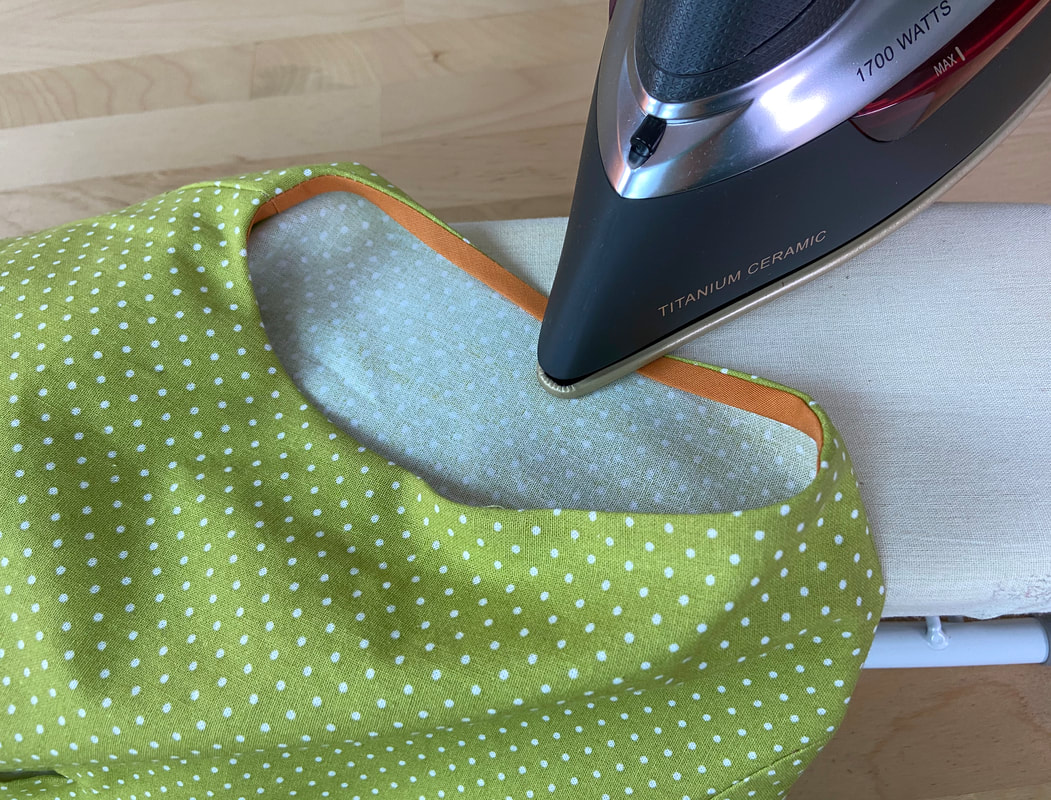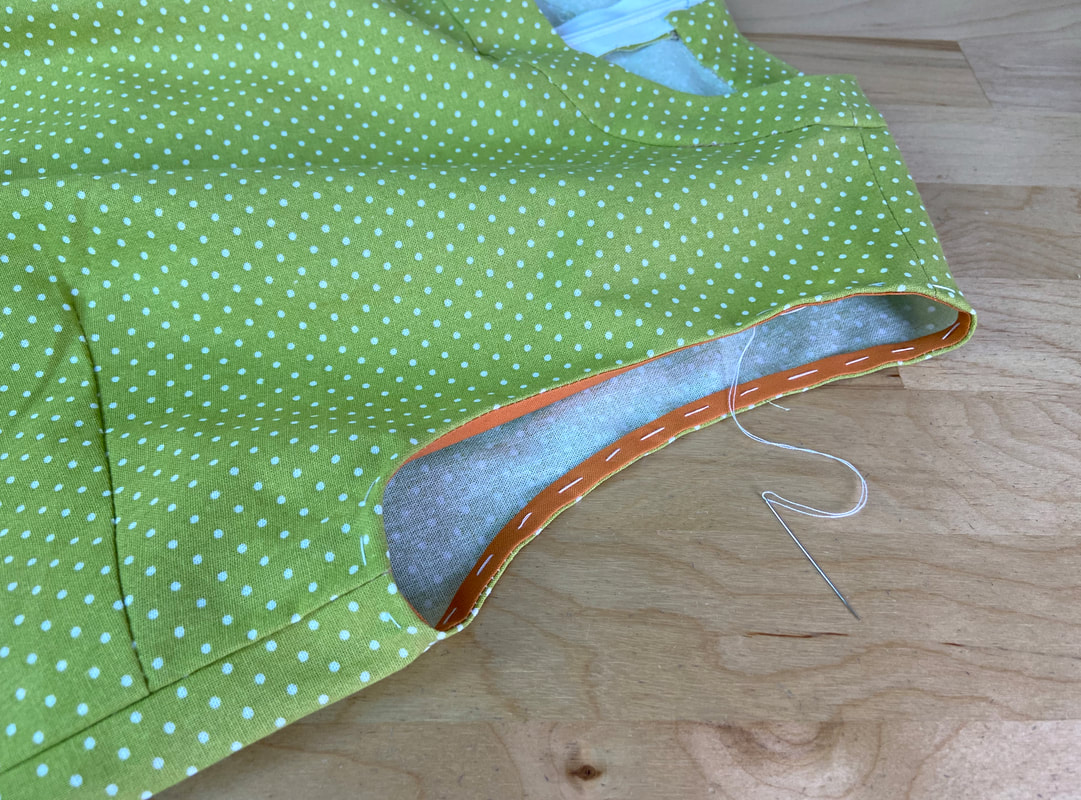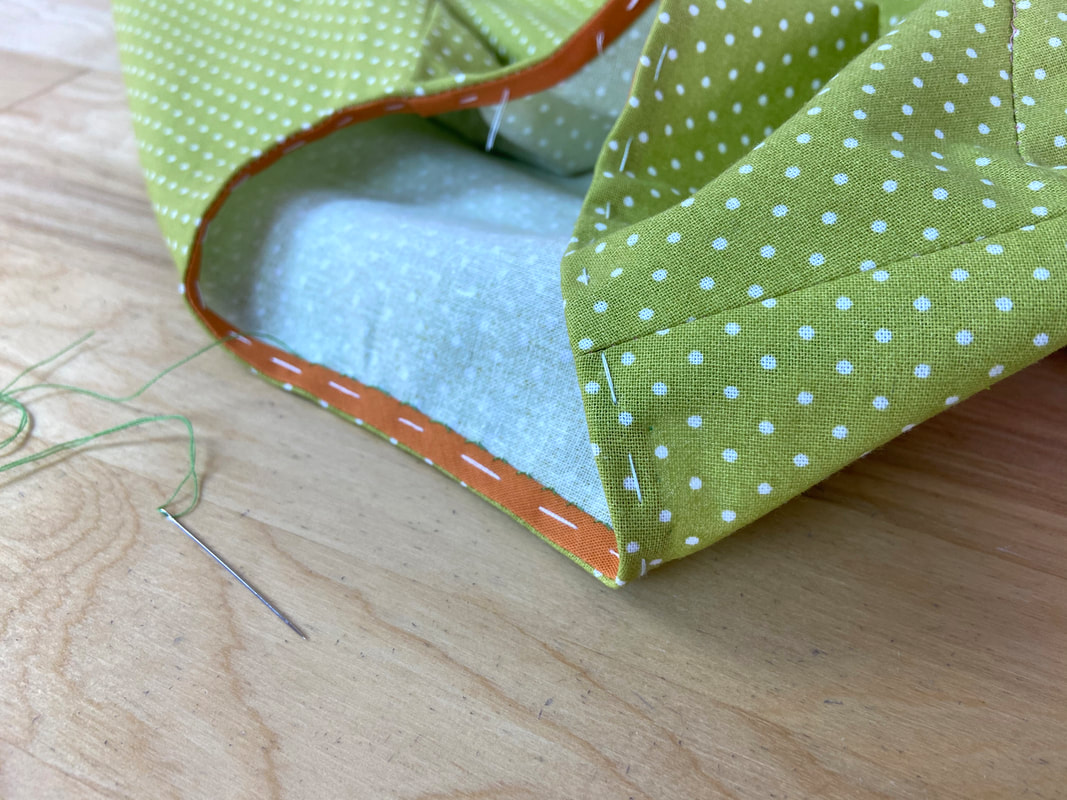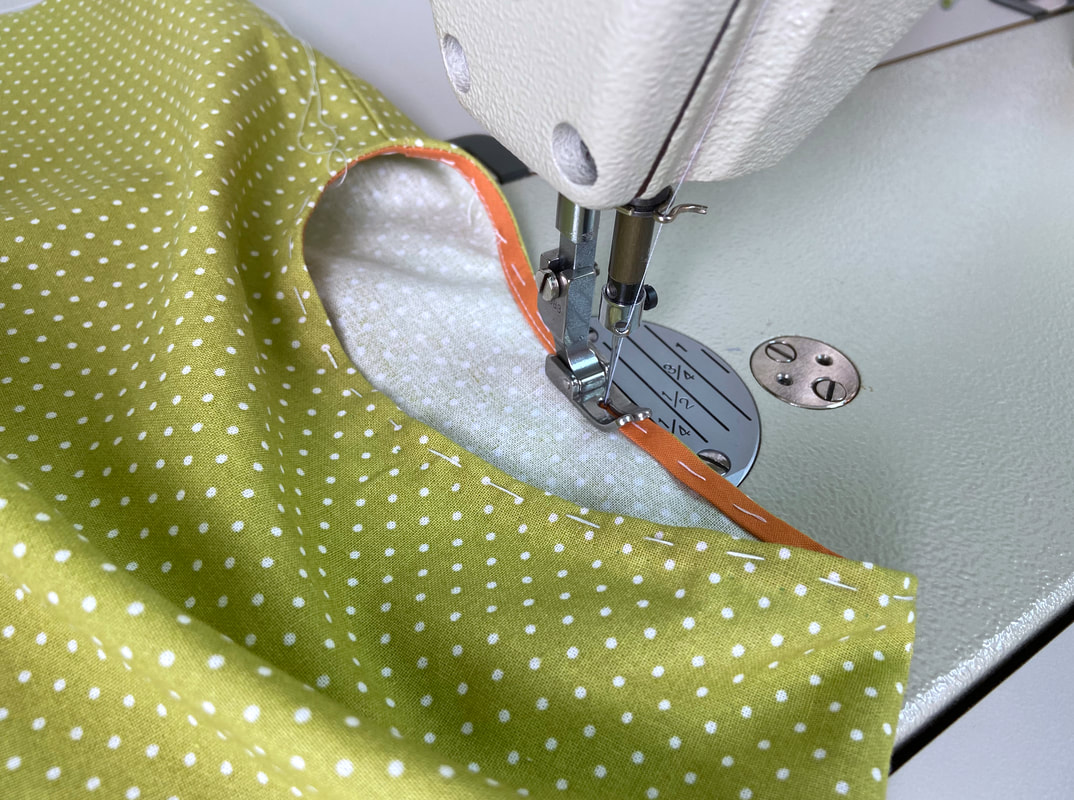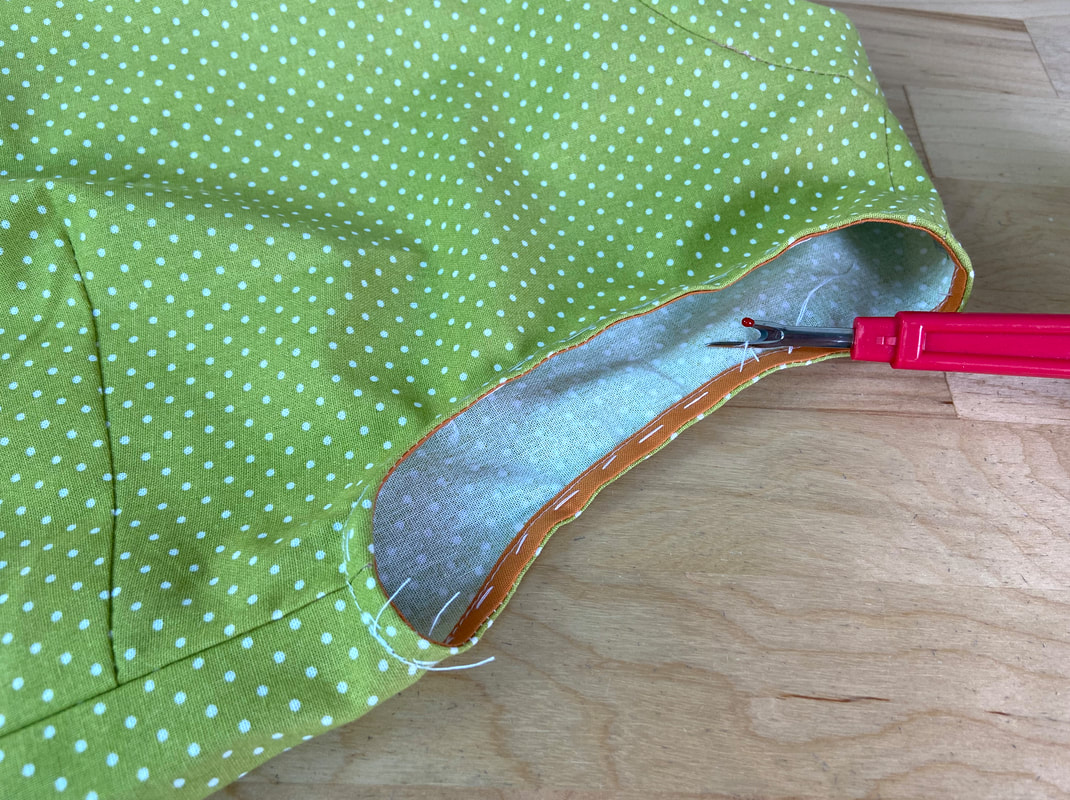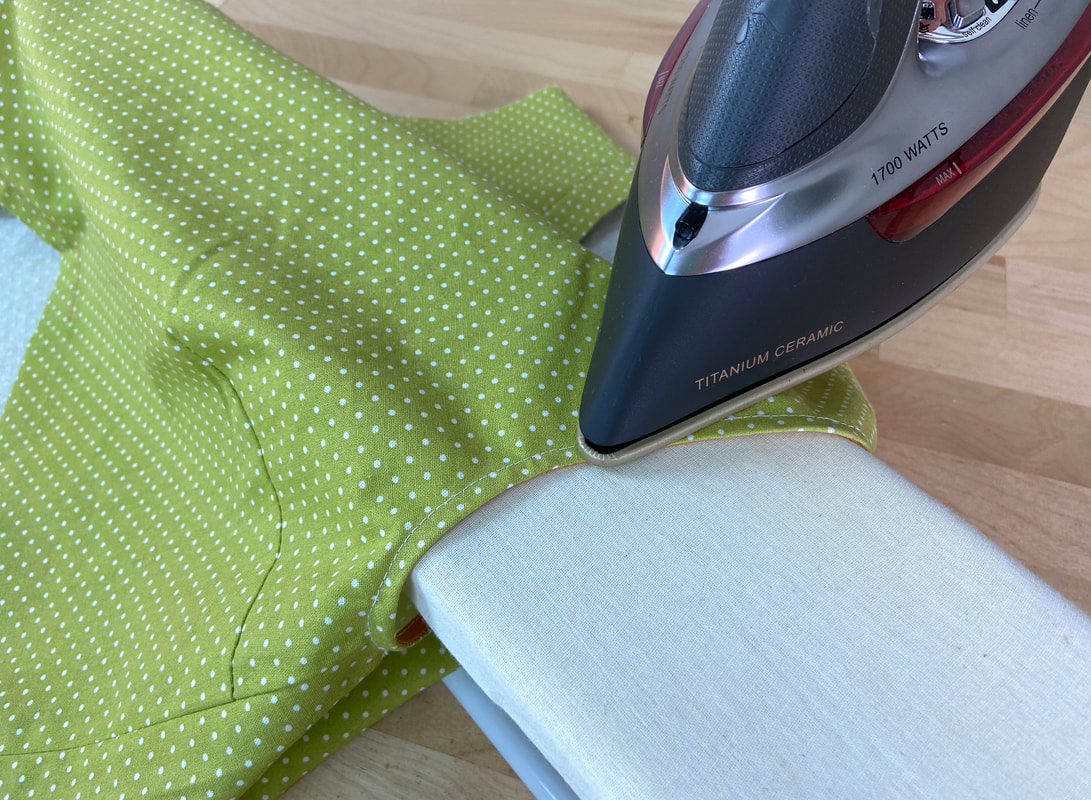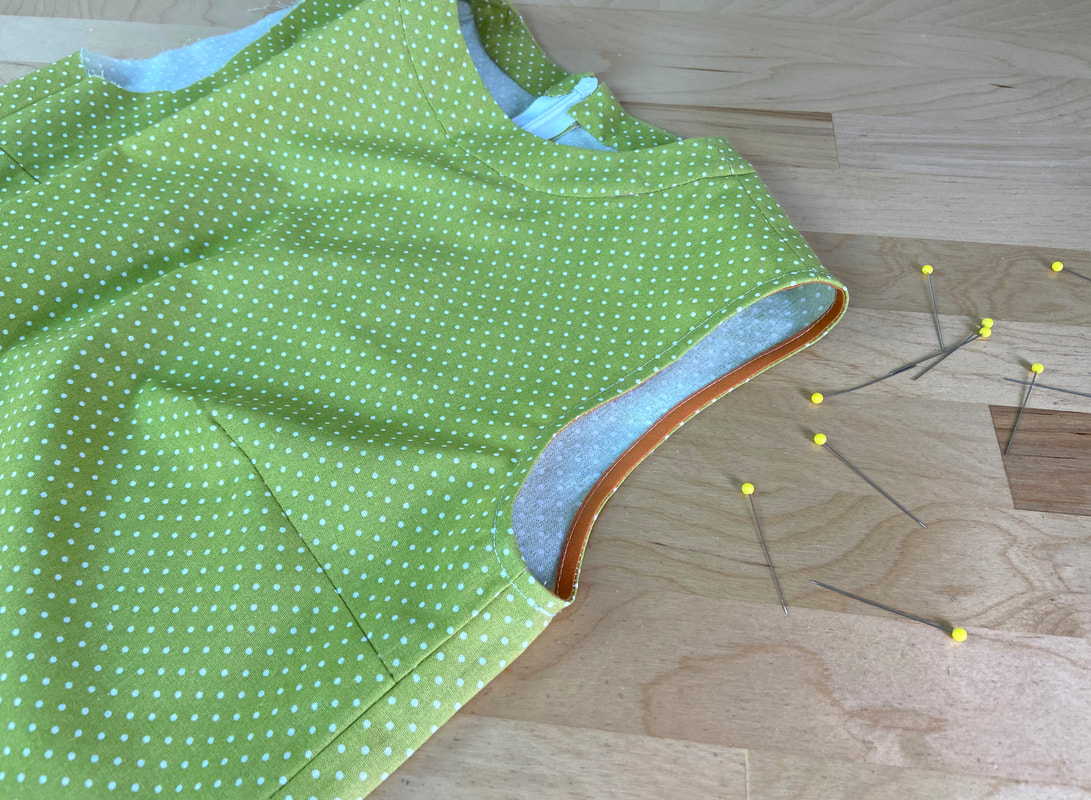A folded, non-exposed bound sleeveless finish is one of the most commonly used techniques in dressmaking.
As opposed to the exposed binding option, a turned-under finish hides the binding on the inside of the armhole edge. The binding itself is attached the same way as you would any exposed style but as a last step, it is folded inward (toward the inside of the garment) becoming invisible on the garment’s face side.
Due to the extra folding step, the armhole edge must have seam allowance that measures the same width as the finished folded binding. For example, if the width of the finished binding is ¼”, the armhole seam allowance should also be ¼”. The matching seam allowance ensures that when the binding is folded inwards, the resulting finished edge corresponds perfectly to the armhole seamline. If this sounds confusing, the sewing steps below will provide some clarity.
As is true with any bound finish, armhole binding is available in three main styles: single layer binding, double layer binding, and pre-packaged/pre-folded binding. The prepping and sewing process is a bit different for all three but the finished look is almost identical. The decision as to which binding to use should be made based on type of fabric and design, as well as which is easiest to apply in the given scenario.
While double layer binding was used for the exposed armhole finish in this tutorial: Finishing Armhole Edges with Exposed Binding, the folded-under binding example below is completed with a pre-folded, store-bought version.
The double folded binding will be opened and attached in the same manner as a single layer binding. In this case however, the construction process is much simpler since the existing fold lines also serve as stitching guidelines.
When working with pre-packaged binding, the binding itself has already been folded at a designated width. The downside to using store-bought binding is the limited fabric, width and color options. If you are indifferent to the color contrast and the pre-packaged binding’s fabric is compatible with your garment’s fabric, then this binding version is truly the easiest to work with.
However, if you prefer to match the bias binding to the garment’s fabric (a more professional option), you can use the steps described in this tutorial: How To Sew Continuous Bias Binding to measure, cut and prepare the bias binding strip at home, prior to sewing it to the armhole edge as described below.
How To Sew A Folded-Under Bound Armhole Edge Using Double Fold Binding
In this tutorial, a double folded, ¼” pre-packaged binding is used. Since the width of the folded binding strip is ¼”, the seam allowance along the armhole edge is also ¼”.
1. Before attaching the binding, stitch, finish and iron both the shoulder seams and side seams comprising the armhole circle.
Once the seams are stitched, open the folded binding such that it becomes a single bias strip with three distinct crease lines.
2. Fold one end of the bias strip at about ¼” in, and pin the bias strip to the edge of the armhole such that the lengthwise edges align and the folded binding end aligns to the garment's seam. Insert a pin perpendicular to the edge through the folded binding strip as shown.
3. Continue aligning the edge of the bias strip to that of the armhole, pinning the two layers perpendicular to the edge.
4. When arriving at the starting point (folded binding end), overlap the end of the binding strip by about ½” and trim the excess. Pin the overlapping ends as shown.
5. Due to the curved nature of the armhole edge, it is helpful to hand baste the bias strip in this position before machine stitching it. If you do not feel comfortable with using pins alone in the stitching process, basting will provide extra stability.
6. Machine stitch the binding to the armhole edge following the binding’s crease line as a guide.
7. Once stitched, remove the hand basting (if any) and trim down the seam allowance excess at areas where it pokes out. Doing so will minimize bulk and provide a smoother, flatter finish.
8. Bring the rest of the folded binding over the seam allowance to fully enclose it, and press the binding in this position to stabilize the alignment.
9. Fold inward one more time such that the entire binding strip is now hidden on the inside if the armhole edge. The armhole seamline should now correspond to the armhole’s outer finished edge.
10. Iron the binding in this position. If needed, insert a few pins to keep the double folded binding secured.
For extra stability, hand baste the bias binding in this finished position.
11. To complete the application, you can either blind stitch or topstitch the inner edge of the binding closed.
To blind stitch the binding: Working on the wrong side of the armhole, use a slipstitch to catch the fold of the binding edge and 2-3 threads from the garment’s surface. Alternate the stitches to seal the binding shut.
No stitches should be visible on the right side of the armhole finish.
More on blindstitching and how to slipstitch in this tutorial: Hand-Applied Blind Stitches
To topstitch the binding (the most commonly used method): Working from the garment’s wrong side, topstitch next to the inner binding fold using the folded edge as a guide. The stitching should remain smooth and evenly-positioned along the entire length of the armhole.
12. As a last step, remove any hand basting stitches and iron the finished bound armhole for a smooth, professional look.
The final binding application should lay flat with the topstitch applied evenly along the armhole curve.

